Propagating Hops Plants: Planting Hops From Clippings And Rhizomes
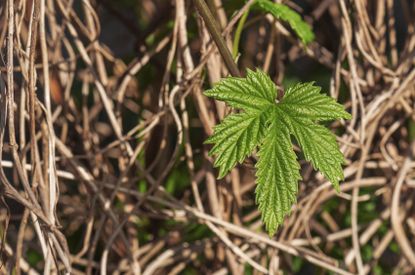

Many of us will know hops from our love of beer, but hops plants are more than a brewery staple. Many of the cultivars produce lovely ornamental vines which are useful over arbors and trellises. Hops plant propagation is primarily from root cuttings. The rhizomes establish quite quickly and are easy to harvest. Plants started from seed may be capricious and result in only male plants, which will not produce the flowering cones. Planting hops from clippings will result in identical clones to the parent hop plant. Here are some surefire tips on how to propagate hops plants for beautiful vines and copious cones.
Hops Plant Propagation Methods
Approximately 98% of the world's hops are used in the production of beer. Plants grow from a perennial crown that produces annual shoots, or bines. Bines may grow up to 25 feet (8 m.) in length. Once established, hops are hardy, resilient plants with taproots that penetrate 15 feet (5 m.) into the earth. Growing hops rhizomes is the quickest method to establish new plants but propagating hops plants from bine cuttings or seed is also possible. Experts agree that planting hops from clippings can be challenging but may be successful if planted immediately after harvest and with several healthy root nodes. Seeds, however, are normally not recommended but can be a fun technique to try.
How to Propagate Hops Plant from Rhizomes
Rhizomes grow from the perennial crown and are similar to roots but root at internodes and sprout quickly, producing new plants in no time. Rhizomes can be found under the soil, usually several inches (8 cm.) from the base of the main parent plant. Growing hops rhizomes requires well-draining soil and fairly neutral soil pH. Harvest rhizomes for hops plant propagation in late spring and plant immediately. Cut 5 to 6 inches (13-15 cm.) of rhizome with a sharp, sterile knife and plant 2 inches (5 cm.) below the soil surface. Keep the area moderately moist for a week. Rhizomes should have sent out roots by this time and begun to produce tiny shoots. Keep the plants moist but not soggy and weed free. Once shoots are a couple of inches (5 cm.) high, use stakes or other support to begin training the plants.
Planting Hops from Clippings
You may install new cuttings in late spring or summer. Again, make sure your soil drains well and is fairly neutral in pH. Add lime or sulfur if you need to correct the soil pH and incorporate plenty of compost. Outdoor plants should be installed 1 to 2 inches (2.5-5 cm.) deep and 3 inches (8 cm.) apart. Keep outdoor plants moderately moist and provide new shoots with some sort of support. Alternatively, root cuttings in individual pots. Use a good sterile potting solution and plant cuttings with at least two root nodes beneath the soil. Cover indoor pots with a plastic bag after moistening the soil. Roots develop quickly and indoor plants should be ready for transplant in two weeks.
Propagating Hops Plants from Seed
Surely someone, somewhere, is growing hops from seed, though it is not recommended. Germination isn't the problem so much as the sex of the plant. If you want the flowering stems with cone-like blooms, you will need female vines. Males are important for pollen but only if you wish to produce seed. Should you have some vines that produced seed, by all means, plant them into a flat and see what they will do. You may get male or female plants, but the seeds do well in an average potting mix with moderate moisture and plenty of heat. For a surefire method of hops propagation, however, cuttings or rhizomes will be faster, establish more robustly and quickly, and the sex of the vine can be determined by the sex of the parent plant.
Gardening tips, videos, info and more delivered right to your inbox!
Sign up for the Gardening Know How newsletter today and receive a free download of our most popular eBook "How to Grow Delicious Tomatoes."

Bonnie Grant is a professional landscaper with a Certification in Urban Gardening. She has been gardening and writing for 15 years. A former professional chef, she has a passion for edible landscaping.
-
 Urban Composting Guide: How To Compost In The Middle Of The City
Urban Composting Guide: How To Compost In The Middle Of The CityUrban composting does not have to be daunting. You can compost in the city, and maybe even try some urban worm composting!
By Mary Ellen Ellis
-
 Shrub Diseases And Pests To Watch Out For
Shrub Diseases And Pests To Watch Out ForShrub diseases and pests can be challenging. Learn how to recognize and eradicate them before they can present a danger to your plants.
By Susan Albert
-
 Hops Plant Pruning: When And How To Prune A Hops Plant
Hops Plant Pruning: When And How To Prune A Hops PlantIf you're a home brewer, there's nothing more satisfying than growing your own hops. But hops are long, fast growing vines that require some strategic pruning to get the most out of them. Learn more about how to prune a hops plant in this article.
By Liz Baessler
-
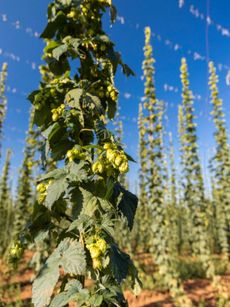 Hops Companion Plants: Learn What To Plant With Hops In Gardens
Hops Companion Plants: Learn What To Plant With Hops In GardensCompanion planting with hops can enhance crop growth and provide a decoy for pesky critters. That said, hop vines are aggressive growers so companion plants need to be considered carefully. This article can help with that.
By Bonnie L. Grant
-
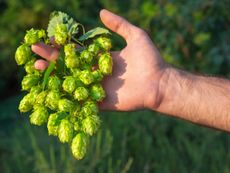 Harvesting Hops Plants: When Is Hops Harvest Season
Harvesting Hops Plants: When Is Hops Harvest SeasonAre you a home brewer? If you have some extra space in your garden, consider growing your own hops to make your beer even more personal.
By Liz Baessler
-
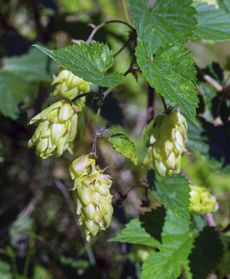 Hops Plant Fertilizer: How And When To Feed Hops Plants
Hops Plant Fertilizer: How And When To Feed Hops PlantsHops can grow up to a whopping 30 feet (9 m.) in a year! To attain this amazing size, it isn't any wonder that they like to be fed every so often. What are hops fertilizer requirements? The following article contains a sort of hops fertilizer guide to help.
By Amy Grant
-
 Hops Spacing Requirements – Tips On Plant Spacing For Hops
Hops Spacing Requirements – Tips On Plant Spacing For HopsMost people know that hops are used to make beer, but did you know that the hop plant is a fast-climbing vine? If you decide to grow hops, give a thought to hops plant spacing. This article has more information on spacing requirements for hops.
By Teo Spengler
-
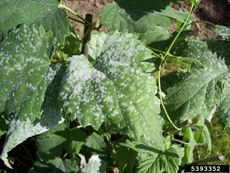 Hops Plant Diseases: Treating Diseases Affecting Hops Plants In Gardens
Hops Plant Diseases: Treating Diseases Affecting Hops Plants In GardensAs prolific as hops can be, the plant may still be afflicted with hops plant diseases. For a fruitful crop, it's important to learn about diseases affecting hops in order to treat hops plant problems ASAP. This article should help with that.
By Amy Grant
-
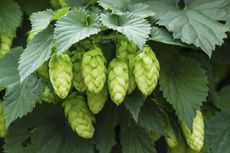 Reasons For No Cones On Hops: How To Get Cones On Hops Plants
Reasons For No Cones On Hops: How To Get Cones On Hops PlantsHops with no cones may be due to the time of the year, cultivation practices, or the age of the vines. Professional growers know how to get cones on hops plants and you can too with a little advice and some tips from the trade. This article will help.
By Bonnie L. Grant
-
 Support For Hops Vines: Learn About Hops Plant Support
Support For Hops Vines: Learn About Hops Plant SupportHops can grow up to 12 inches (30.5 cm.) a day. These rampant climbers need a sturdy trellis of appropriate height to accommodate their size. The following article contains information on the best support for hops plants and building a trellis for hops.
By Amy Grant